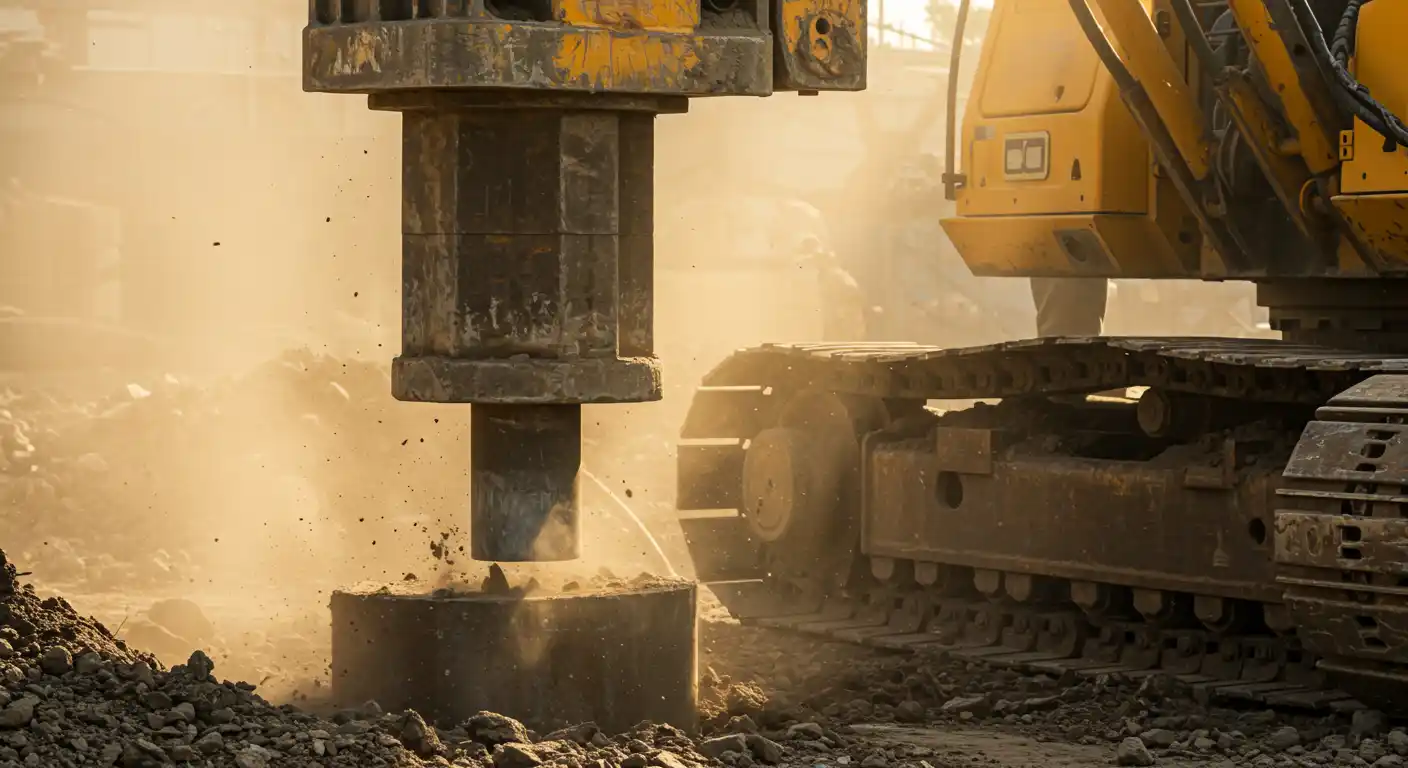Ground Improvement in Construction is the first to a great building, Successful construction always starts from the ground up. Before any building, bridge, or industrial project rises, engineers must ensure the soil beneath can safely support loads and withstand long-term performance demands. For projects built on weak or problematic ground, Ground Improvement in Construction becomes a critical engineering step to avoid settlement issues, structural instability, and costly failures.
At KON General Contracting L.L.C, we apply advanced ground improvement solutions to transform weak soil into a stable, load-bearing foundation, ensuring long-lasting and safe construction performance.
What Is Ground Improvement?
Ground improvement refers to engineering techniques used to enhance the physical properties of soil and make it suitable for construction. The goal is to increase soil strength, reduce compressibility, and improve stability.
Why it matters
Certain natural soil conditions aren’t strong enough to carry structural loads. Instead of moving the project or switching to very deep foundations, engineers can improve the soil itself — saving time and cost.
Where it is used
Ground improvement is commonly required in locations such as:
- Coastal developments and reclaimed land
- Industrial zones and warehouses
- Residential buildings and high-rise projects
- Road and bridge works
- Ports and marine structures
Why Ground Improvement in Construction Is Crucial
Weak soil can cause major structural risks such as:
- Excessive settlement, leading to cracks and tilting
- Instability and slippage
- Foundation movement and safety concerns
- Long-term maintenance and repair costs
Ground Improvement in Construction ensures safer and more cost-efficient construction across sectors such as:
- Residential & commercial buildings
- Bridges & highways
- Ports & waterfront infrastructure
- Industrial plants & storage facilities
With the right method, engineers can build confidently even on challenging ground.
Types of Weak Soils That Require Treatment
| Soil Type | Characteristics |
|---|---|
| Clay | Expansive, high shrink-swell behavior, slow drainage |
| Loose sand | Low density, prone to liquefaction under loads |
| Organic soils | High compressibility, poor strength |
| Soft silts | Weak bonding, settlement risk under loads |
Each soil type requires a unique improvement approach based on load requirements and site conditions.
Most Common Soil improvement methods
Below are widely used techniques applied by engineering teams, including KON General Contracting L.L.C.
Mechanical Compaction
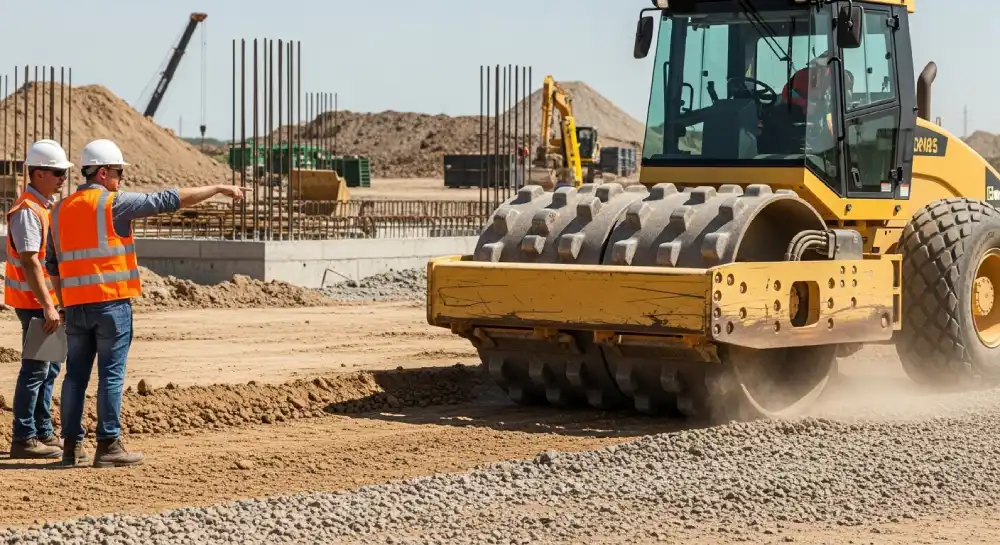
Definition: Compressing soil using rollers, compactors, or tamping equipment to increase density.
Advantages: Simple, efficient, cost-effective.
Best use: Roadworks, backfilling, shallow building foundations on granular soils.
Vibro-compaction & Vibro-replacement (Stone Columns)
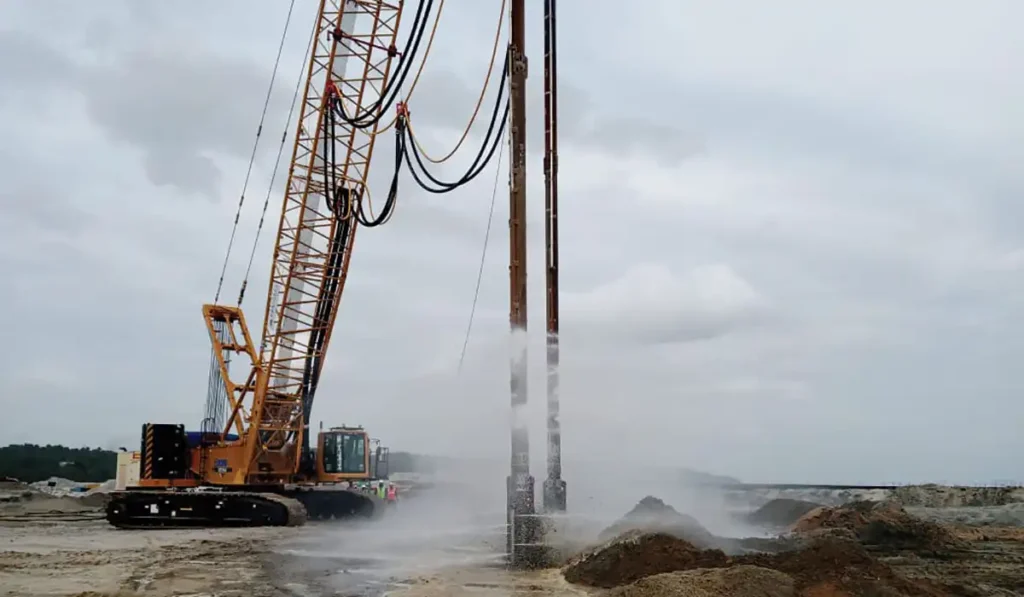
Definition: Using vibration probes to densify loose sand (vibro-compaction) or installing stone columns to improve load capability (vibro-replacement).
Advantages: Excellent for deep treatment, increases bearing capacity, reduces settlement.
Best use: Coastal sand fills, large building pads, industrial sites, marine works.
Dynamic Compaction
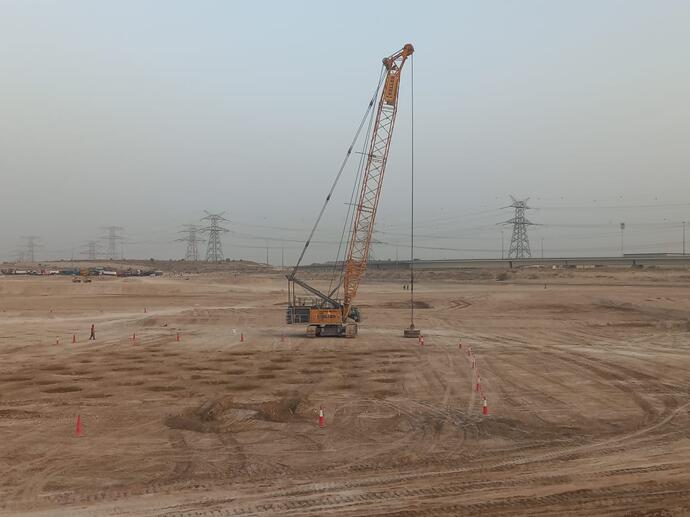
Definition: Dropping heavy weights repeatedly from a height to compact deep layers.
Advantages: Effective at great depths, economical for large areas.
Best use: Old landfills, reclaimed land, weak granular soils.
Grouting Techniques (Chemical & Cement Grout)

Definition: Injection of cement or chemical grout into soil to fill voids and bind particles.
Advantages: Precise, adds strength, reduces permeability.
Best use: Under foundations, around tunnels, beneath existing structures, confined zones.
Soil Mixing (Deep & Shallow)
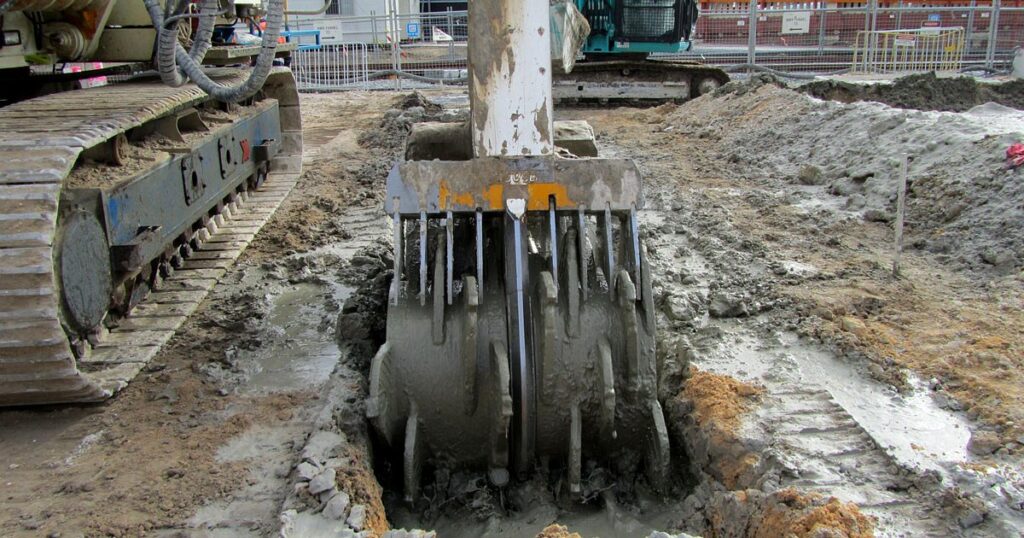
Definition: Mechanically mixing soil with cementitious binders to create improved soil-cement columns.
Advantages: Reliable strengthening, good for soft clays and silts.
Best use: Embankments, foundations in soft soil, shafts & underground works.
Geosynthetics (Geogrids, Geotextiles)
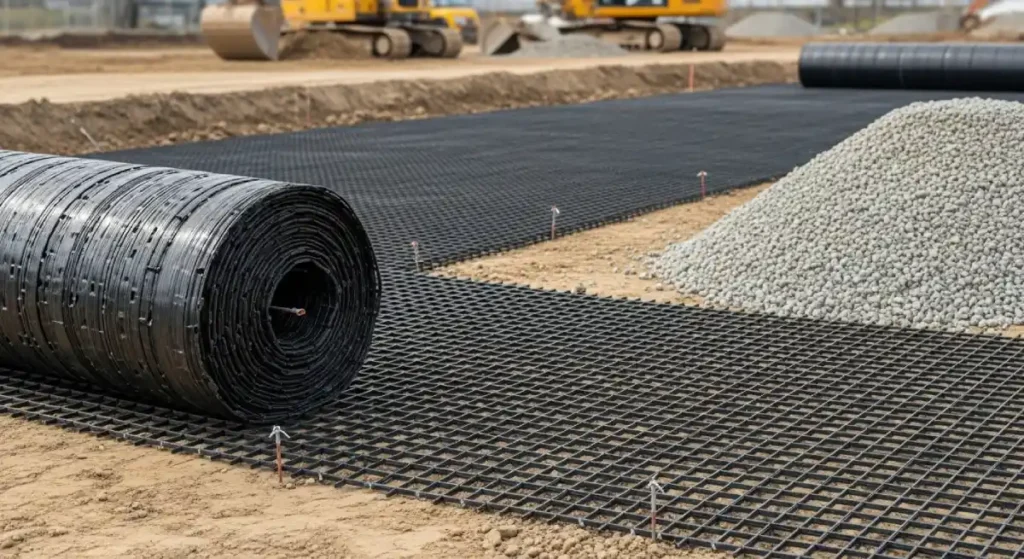
Definition: Using engineered fabrics to reinforce soil layers.
Advantages: Enhances strength, controls erosion, cost-effective.
Best use: Roads, retaining walls, embankments, slopes.
Drainage & Dewatering
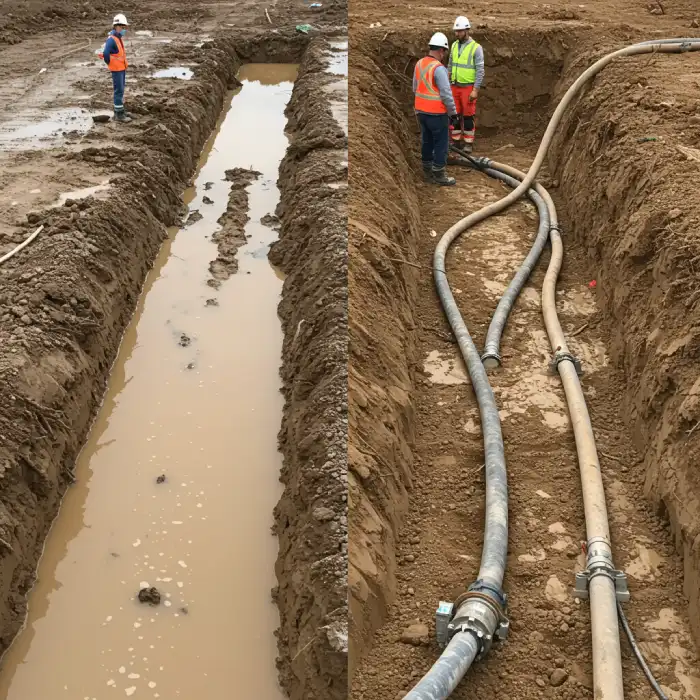
Definition: Removing water or accelerating drainage to improve soil behavior and reduce settlement.
Advantages: Prevents instability, controls water pressure.
Best use: Saturated clays, soft soils, deep excavations, underground works.
Factors Affecting Ground Improvement Method Selection
Engineers assess multiple factors before choosing a technique:
- Soil type and geotechnical profile
- Groundwater level and drainage behavior
- Load requirements and foundation type
- Project budget and timeline
- Environmental conditions and site access
Proper soil investigation is the key to designing an effective improvement plan.
Benefits of Ground Improvement in Construction
- Enhanced soil stability (Ground stabilization)
- Reduced settlement risks
- Ability to build safely on challenging ground
- Avoidance of expensive deep foundations
- Improved safety and lifespan of structures
- Cost-efficient and environmentally friendly solutions when compared to soil replacement
Ground Improvement in Construction helps projects move forward securely and affordably.
Case Study Example
A simplified demonstration
- Before: Soft sandy soil with high liquefaction risk at a coastal site
- Solution: Vibro-replacement stone columns installed in grid pattern
- Result:
- Soil densified
- Settlement reduced significantly
- Safe load-bearing achieved for industrial foundation
This real-world outcome shows how engineering techniques transform unstable ground into a solid foundation.
Conclusion & Best Practices
Ground Improvement in Construction plays a vital role in modern construction — especially in areas with weak soil, high groundwater, or ambitious load requirements. Using advanced methods like vibro-replacement, soil mixing, and geosynthetics helps engineers build safe, durable, and cost-efficient structures.
Engineering Tips
- Always begin with a geotechnical site investigation
- Choose the improvement method based on soil behavior — not assumptions
- Monitor quality throughout execution
- Work with qualified specialists to avoid structural risk
Why Choose KON for Ground Improvement?
If you’re planning a construction project on weak soil, consulting with a geotechnical expert ensures safe and cost-effective foundation solutions.
KON General Contracting L.L.C provides professional Ground Improvement in Construction services backed by engineering expertise and proven on-site execution.
Contact our team or Get a Quote today and let us help you build confidently on any soil condition.
